An interview with Richard Devine by Wilder Gonzales Agreda from April 2020. Reprinted with permission (Vanguardia Peruana).
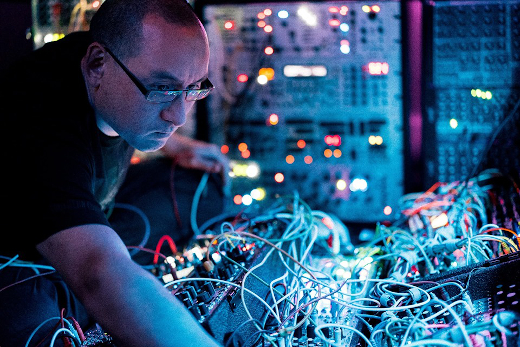
Complex rhythms, ultrasonic, and brainy psychedelia
Richard Devineis an Atlanta-based musician and sound designer who helped to establish the American IDM generation of the 90s. His music profuse in layers of complex rhythms, ultrasonic, and brainy psychedelia has been released on labels such as Warp, Schematic Music Company, and Detroit Underground. Along with his discography, Devine explores his neuron mounting patches and FX modules for Korg, Native Instruments, Clavia, et al. and making sounds for companies like Google, Apple, and Nike. His sonic futurism expresses the conjunction between technology (in a playful way) and with research.
Wilder Gonzales Agreda :: How and when was your interest in electronic music and IDM born?
Richard Devine :: It started back in 1993, when I discovered the work of Richard D. James (Aphex Twin). I bought the Mindstream Remixes EP which had a remix by AFX, I was completely blown away by his futuristic sound, and I wanted to seek more of this type of music. I began buying more records from his catalog and eventually discovered Rephlex Records/Warp etc. I was listening to lots of electronic before this, and had been going to a lot of early raves in the early ninties but it wasn’t until I heard his music that I knew that I wanted to create music in this similar style and approch but with my own personal touch.
The majority of your work navigates on the braindance and intelligent techno fields and you have published on labels like Schematic, Detroit Underground and Warp. In 1995 you released Sculpt LP, much more oriented to the rave and psychotropic tide of the epoch than to IDM itself. What can you tell us about those days and about that particular album? What memories at a distance from the experimental electronic 90s?
Yes I discovered a lot of the early detroit techno during this period with music like the work of Jeff Mills, Rob Hood, Mike Banks, Planet-E, Underground Resistance, and Drexciya. I was heavily influenced by these early electronic artists and then later discovered the work of Basic Channel/Maurizio etc. This first record Sculpt (short for “sculptures”) was meant to represent my first collection of minimal techno inspired pieces. It was a 3LP album. I also did another collection of tracks in 1994 which was later released on Drop Bass Network. That record was called Polymorphic EP. Like I mentioned before, I was going to a lot of early 90’s raves. Listening to lots of techno, and early acid music. I still love this era; there was so much new stuff happening in the midwest techno scene. I remember the first time I heard Richie Hawtin play as Plastikman. The scene during that time was flourishing with new and innovative music. I was just in high school at the time, at the age of 15 or 16, so I was absorbing everything I could.
What is your opinion of the new popular synths manufactured by Behringer or the Volca Korg? Ekoplekz from England uses Volca Keys, would you dare to make a record with them?
I have all of the Volca boxes by Korg, I especially love the Volca FM, and the Drum. I have no issues making music with these instruments. I don’t personally care if its popular or not. I am just interested in what sounds it can produce. I will use a $1 cheap children’s toy or a $7K multi-band stereo compressor—it doesn’t really matter to me. I am just most interested in the final output.
Tell us about your work for Google or Nike.
I work mainly as a user interaction sound designer. That is basically the creation of all the UI based sounds, for either a application, system OS, VR game, or other interactive environment. I have also worked almost 20 years doing TV spots for advertising companies. From there I started working on video games and Virtual Reality sound design with Ambisonics.
What is your favorite sound?
The sound of my back yard at night during the summer months with the Cicadas and Locust. There are thousands of them that live in our area. I love how you can hear thousands of these insects calling to each other in the trees.
How have you bared with these days of quarantine and pandemic? Any thoughts on Bill Gates, Donald Trump, and COVID-19?
I have been taking up live coding using Tidal Cycles to sequence my modular and synths at the moment. So been deep in code working on making new music. I have seen the news everyday, with Bill Gates, and Donald Trump. The current state of affairs in our country is crazy, we are in complete lock down right now. So we have been playing in our yard, raising two baby praying mantises and a water turtle with my two kids. We have been just going back into nature, by going out on hikes to the national parks and mountains trying to get away from everyone.
AFX or Ae?
Ae—love what Rob and Sean do, plus they were the first people to take interest in my work back in the late 90’s and really help me my first album on Warp records. Great guys.
If you had to spend a year in lockdown, which synth would you choose?
That would have to be either the Nord G2 modular or Waldorf Qauntum.
Where do you think the future of experimental music is going?
I am really fascinated with the current Algorave (from an algorithm and rave) movement and these new artist creating music with live code and these systems created in the Haskell code environment. I am also interested and researching Machine Learning and AI generative based systems. At the moment, it is to be the ground work for my next album.
Richard Devine is an award-winning sound designer and electronic composer whose sounds are applied to consumer products worldwide that range from smartphones to electric cars and touch on leading-edge areas such as AI and Virtual/Augmented reality environments. He has worked with the likes of Sony, Microsoft, Google, Jaguar, BMW, and Nike. ~ Bandcamp
Visit Richard Devine at richarddevine.com.






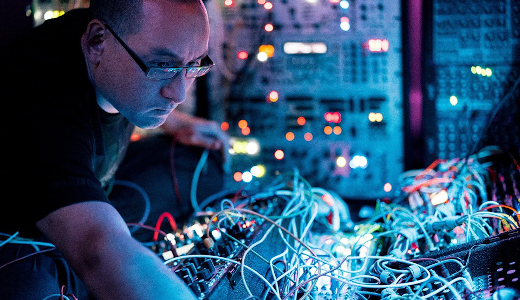
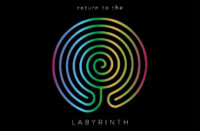



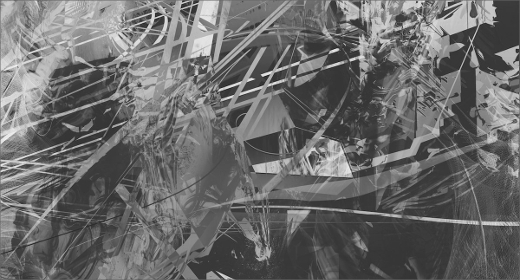

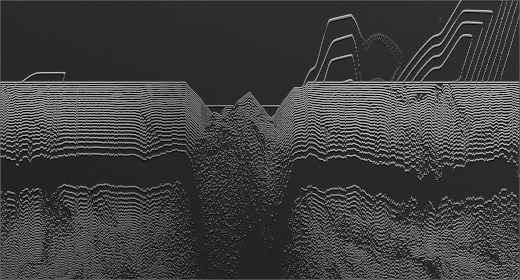


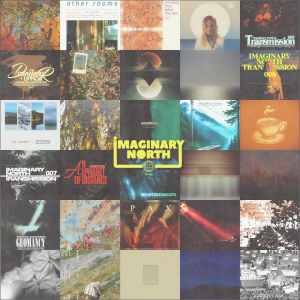


![Hasbeen :: Bunker Symphonies II (Clean Error) — [concise]](https://igloomag.com/wp/wp-content/uploads/2025/04/hasbeen-bunker-symphonies-ii_feat-75x75.jpg)
![Extrawelt :: AE-13 (Adepta Editions) — [concise]](https://igloomag.com/wp/wp-content/uploads/2025/04/extrawelt-ae-13_v_feat-75x75.jpg)
![Beyond the Black Hole :: Protonic Flux EP (Nebleena) — [concise]](https://igloomag.com/wp/wp-content/uploads/2025/04/beyond-the-black-hole-protonic-flux_feat-75x75.jpg)
![H. Ruine, Mikhail Kireev :: Imagined / Awakenings (Mestnost) — [concise]](https://igloomag.com/wp/wp-content/uploads/2025/04/h-ruine-mikhail-kireev-imagined-awakenings_feat2-75x75.jpg)


![Squaric :: 808 [Remixes] (Diffuse Reality) — [concise]](https://igloomag.com/wp/wp-content/uploads/2025/04/squaric-808-remixes_feat-75x75.jpg)
